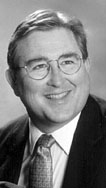Most folks to day do not realize there is an original, or first, cemetery in Gadsden. The Vagabond recalls talking to the late Jerry Jones on this first graveyard.
Jerry stated that it was brought up years ago when Will I. Martin first told him about it. When questioned he took Jerry behind the old City Hall on Fifth Street (across Fifth Street from the Cultural Arts Center) and showed him the tombstones still standing.
The Vagabond asked what happened to the graves, and Jerry said that when City Hall was torn down they also bulldozed the tombstones but left the graves.
To this day, if you park in what is now the parking lot, chances are you may be parked over someone’s grave.
Gadsden first public cemetery was located in the block enclosed by Broad, Fifth, Locust, and west of Court streets. It is not known when the cemetery was established, but there were churches in the area as early as 1845.
The First Methodist Church was established that same year.
The church first met in a schoolhouse located on the south side of Broad Street between Fourth and Fifth streets.
Not long after 1845, a church was built between Broad and Locust streets, probably between Third and Fourth Streets.
This was a Union Church at first, but was purchased by the Methodists, who sold it to the Presbyterians in 1875.
In 1879, the Presbyterians built their first church on Chestnut between Fifth and Sixth streets.
In 1860, the First Baptist Church was erected on the northwest corner of Broad and Fifth streets.
At that time, Fifth Street did not exist between Broad and Locust Streets.
In the early 1870’s, the first courthouse in Gadsden was constructed between Court, Broad, Fourth and Locust streets at the rear of the block.
The courthouse was across the street from the cemetery.
In early 1900, Gadsden City Hall was constructed on the west side of the block that encompassed the cemetery.
Some people can remember some graves behind city hall. In 1869, J.A. Green became a citizen of Gadsden, and he wrote in Recollections of Gadsden that the cemetery covered the west half of the block.
In 1992, Everett Hart remembered 25-30 graves, some with markers, and said that most of those were near Locust Street.
In an article in a local newspaper dated April 13, 1877, the cemetery had long been abandoned. The enclosing fence was broken and hogs and cows roamed at will.
The title to the property was vested in the town of Gadsden only on the condition that it be used as a burial place.
Certain citizens donated the lot exclusively for that purpose, and any attempt to make use of it in any other way would entitle the original owners to a reversion.
It was said to be a beautiful lot located in the center of the town, and was long abandoned as a burying ground.
The enclosing fence was broken in many places, and hogs and cows roam at will over ground sacred to many of the citizens of Gadsden and the surrounding country.
The article stated that, ”Now, would it not be well to remove the bodies to the new cemetery [Forrest] and let the lot revert to the original owners, by whom it could be turned to use in a business way, or build a new fence around it, that the graves of our dead may not be desecrated by prowling beasts!
“As it stands it is a discredit to the community.”
Some of the cemetery apparently was not well drained.
Evidently, soil covering some graves settled, and not much was done in the way of maintenance.
During the wet season, the stench of decaying bodies was rather offensive.
Also, in the 1880’s a brief report stated someone had found a petrified finger near Broad Street.
When the town began to grow, the cemetery indeed was an obstacle.
In 1879, the Alabama State Legislature passed a bill authorizing the removal of all bodies and graves to Forrest Cemetery, the latter having been established in 1872.
The city awarded a contract to John Plunkett, an Irishman and professional ditch digger. Crowds would gather from day to day as Plunkett and one assistant dug into the earth.
Some graves yielded bodies and some only black dirt and splinters from wood coffins.
It was recalled that in one grave, the body of a young soldier, almost perfectly preserved, uniform and all, was uncovered.
In another grave, a pile of perfectly coiled blonde hair from a young girl was found…. nothing more!
It was not known at the time, but years later some graves were uncovered in the Fifth Street area, north of Locust Street and the L&N Railroad.
It was also known that there were some graves in the rear of the First Baptist Church, which was located on the northwest corner of Broad and Fifth streets.
From this, it can be seen that graves were scattered and some were outside the four streets mentioned earlier.
To this day, it is believed that graves are still buried in the downtown area.





